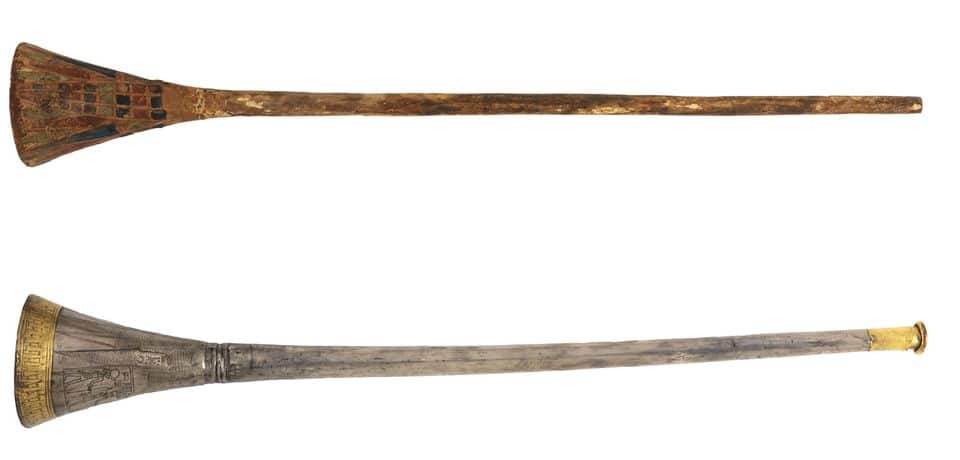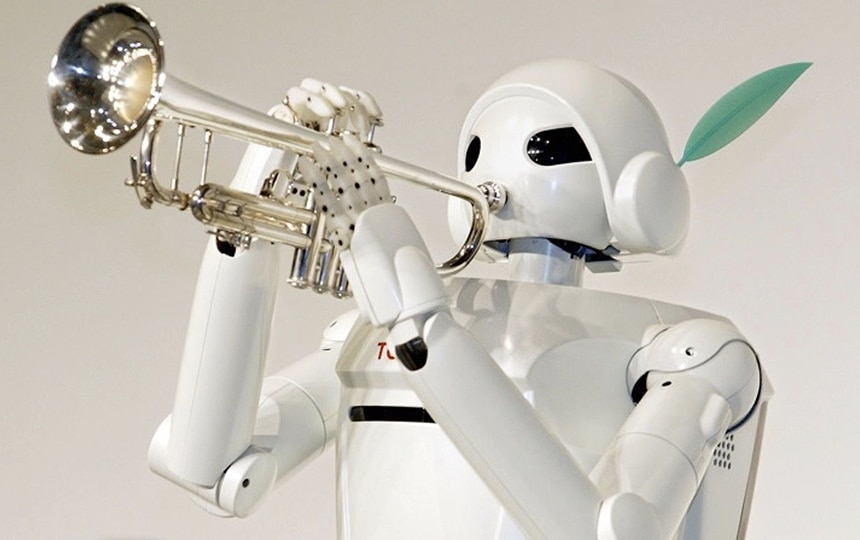There are many types of trumpets. It’s an instrument that can be found in any marching band or orchestra and in many ways, it’s taken for granted. But, when you think about the ways that it can be played to produce many kinds of music from jazz to classical the versatility is surprising. The trumpet is a fascinating brass instrument that can be found at the heart of any brass section to provide some amazing tones. However, many new or more experienced players don’t know about the history and versatility of this wonderful instrument. In this article we will take a look at twenty fascinating trumpet facts and some may surprise you.
You may have the best trumpet on the market, but you may be surprised to learn that it’s the product of multiple inventors over the years. There are three main people credited with the invention of the modern trumpet, they are: Heinrich Stoelzel, Friedrich Bluhmel, and Charles Clagget. In 1788, it was Charles Clagget that made the first trumpet valve mechanism, but it wasn’t viable and the other inventors revised his design in 1818. The result was the box tubular valve which is the same valve that we use in trumpets today.

One of the most interesting facts about trumpet instruments is that the earliest ones date back to around 1500 BC. These trumpet type instruments were made from bronze or silver and they are found in many regions of the world, including Scandinavia, Asia, and South America. In fact, these types of trumpets were found in King Tut’s tomb in Egypt.
If you own the best jazz trumpet you will know that it’s made from good quality brass. However, earlier trumpets were made from a wide variety of materials, including conch shells and wood. If you go back to ancient times you will see that resonant metals were not a practical choice and people turned to animal horns and other materials to make music.
The world’s largest trumpet measures 104 feet and 11.84 inches in length. The bell has a circumference of 22 feet and a diameter of 17 feet. This trumpet can be played, it was used to break the world record on October 31, 2009, by Benny J. Mamoto.
A modern trumpet may be smaller than many other brass instruments but has almost 6½ feet of tubing. This helps the player to get a huge sound out of a trumpet that can be held comfortably in one hand. To put this in perspective, a tuba has 12-16 feet of tubing and a trombone has 9 feet.
Any trumpet player knows that a good trumpet can be expensive with prices from $200 all the way up to $10,000 or more for the best examples. However, these prices pale in comparison to a trumpet owned by Dizzy Gillespie which sold in auction for $55,000 back in 1995.
If you already own the best piccolo trumpet you can afford, you likely understand that different trumpets are designed to play in different keys. The most common trumpet keys are C and B-flat and the B-flat trumpet was the initial key on the first modern trumpets. When a trumpet is longer, it can play at a lower pitch, generating different tones. A prime example would be the B-flat trumpet which isn’t as bright sounding as other trumpets and this is why it’s often used by jazz players.
Modern trumpets typically use one of two valve systems, but there are three further valves that are no longer in use today, they are Viennese, Stoezel, and Berliner valve systems. These three valves were used during the development of the trumpet and although they are no longer used they are an important aspect of trumpet facts and history.

Toyota revealed a robot that could play the trumpet to a reasonable standard back in 2005 and they followed up with other robots that could play the violin and drums!
The trumpet has many similar related instruments such as the cornet. It’s easy to make a mistake if you don’t know the differences between them. In terms of tone, a cornet sounds mellow and less “brassy” than a trumpet. When you look at a cornet and trumpet side-by-side you will notice that the cornet is smaller and it has a more noticeable conical shape.
Howard Carter recovered a pair of ceremonial trumpets from King Tut’s tomb in 1922. The pair of trumpets were made of copper and silver and engraved with Egyptian gods. The BBC broadcasted the playing of these trumpets live on the radio in 1939 and many people made superstitious claims that this caused the British involvement in World War II.
When you play a piano or guitar, you simply move up the keyboard or fretboard when you want to produce a high note. Even certain wind instruments such as the saxophone have keys to change octaves, but a trumpet has no facility for this. When you want to produce a high note with a trumpet you need to use your lungs and lips. Once you realize this it makes those higher notes you see a trumpet player achieve even more impressive.
A trumpet has three valves, but using them in combination can produce 45 notes. As an example: a B-flat trumpet has a range of notes from F#3 up to F#6.
If you enjoy classical music some great trumpet players to emulate are Alison Balson, Philip Smith, and Chris Martin. Jazz lovers can check out Dizzy Gillespie, Miles Davis, and Louis Armstrong. Aside from these amazing trumpet players, there are some celebrities that played trumpet in school, including Steven Tyler and Samuel L. Jackson. You’re less likely to find trumpet recordings from these two though!
The trumpet has a long and ongoing connection with various supernatural beliefs. In the Bible, there are references to angels playing trumpets, which are associated with transporting souls to the underworld. This is probably due to the huge ethereal sounds that trumpets can make.

An early example of the trumpet from biblical times is the shofar which was made from a ram’s horn.
One of the most revered jazz trumpeters was Dizzy Gillespie with his large cheeks producing an incredible volume of air and his 45º trumpet bell angle. In fact, this iconic trumpet design feature was caused by an accident in 1953, when an audience member fell on the trumpet and bent the instrument. However, Dizzy wasn’t phased at all, he simply picked up the trumpet and continued to play it for the rest of his career.
If you enjoy competing in trumpet playing competitions you would have felt right at home in the Greek Olympics. The original Olympics had competitions between heralds, the man to beat was Herodos, by all accounts he was a giant of a man and he won ten consecutive events. It was said that Herodoros could blow two trumpets at the same time which inspired soldiers to win their battles.
The trumpet is a loud instrument, it can reach 120dB which is equivalent to the sound of a chainsaw or a thunderclap!
During the Midosuji Autumn party in 2018, the Japanese Trumpet Team performed a fanfare with 172 players. This is currently the highest number of trumpet players to play valve trumpets at the same time. But, this record tends to be broken on a consistent basis and it will be interesting to see how high the number can go.
Investing in the best trumpet that you can afford makes good sense but as you can see trumpet playing has been around for a long time and the trumpet has a rich history. These trumpet facts are interesting, but they also demonstrate the enduring nature and range of the instrument. When the trumpet is placed front and center it shines but it can also form the backbone of brass sections and orchestras.